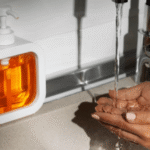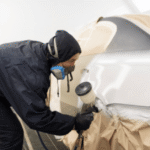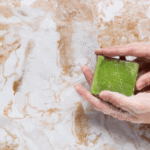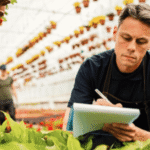Automatic car painting is one of the most transformative innovations in the automotive industry, combining robotics, precision engineering, and advanced coatings to deliver consistent and flawless finishes. For readers searching to understand this concept, the answer is simple: automatic car painting refers to the use of automated systems, often robotic arms and programmed spray mechanisms, to apply paint to vehicles with accuracy and efficiency, reducing errors and increasing production speed. Unlike traditional hand painting, which relies heavily on individual skill, automation ensures uniform coating, better adhesion, and minimal wastage of paint materials. This is not only crucial for large-scale automotive manufacturing but also increasingly relevant in repair workshops and custom paint facilities that want consistency and professional results.
The significance of automatic car painting extends far beyond speed. It is about reducing environmental impact by minimizing overspray, creating durable finishes that withstand weather and wear, and ensuring vehicles reflect both brand identity and craftsmanship. For consumers, it means cars that look new longer and retain resale value; for manufacturers, it means streamlined production and lower costs. In recent years, automatic car painting has evolved to incorporate artificial intelligence and adaptive sensing, making the process even more refined. As one expert put it, “Automation in painting isn’t just about machines replacing hands—it’s about elevating quality to levels hands alone cannot achieve.” This article explores the history, processes, technologies, and future of automatic car painting while offering insights into how it impacts both industry professionals and everyday drivers.
The Evolution of Automatic Car Painting
Automatic car painting did not emerge overnight; it was the result of decades of experimentation with spray technology, industrial robotics, and coatings chemistry. In the 1960s and 70s, early conveyor systems began applying primers and topcoats, but results were often inconsistent. By the 1980s, robotics entered automotive production lines, giving rise to programmable arms that could mimic the sweeping motions of skilled painters. Over time, these systems improved with better sensors, software algorithms, and the ability to adapt to different vehicle shapes. Today, manufacturers deploy multi-axis robots capable of adjusting pressure, angle, and spray volume within milliseconds, ensuring a perfectly even finish. This transition mirrors broader industrial automation trends: precision replacing approximation and consistency replacing variability.
How Automatic Car Painting Works
At its core, automatic car painting involves robotic systems, spray equipment, paint cartridges, and drying units working in harmony. Cars are moved along a conveyor system into controlled booths where robots perform programmed painting sequences. These robots use high-pressure nozzles that atomize paint into fine particles, ensuring maximum surface coverage with minimal overspray. Sensors scan the car’s dimensions in real-time, adjusting spray paths accordingly. After each coat—primer, basecoat, and clear coat—the vehicle passes through a drying or curing chamber, where heat and airflow solidify the finish. The result is a glossy, smooth, and durable exterior, often superior to hand painting. “The paint shop is the heart of a car’s aesthetics,” remarked one automotive engineer, emphasizing how this automated process ensures every vehicle meets showroom standards.
Benefits of Automatic Car Painting
The advantages of automatic car painting can be grouped into efficiency, quality, cost reduction, and sustainability. Efficiency stems from the ability of robots to work around the clock without fatigue, speeding up production cycles. Quality is evident in the smoothness and evenness of paint layers, with fewer imperfections like streaks or bubbles. Cost reduction occurs because less paint is wasted, rework is minimized, and fewer human resources are needed for labor-intensive spraying. Sustainability is achieved through controlled paint usage, reduced emissions of volatile organic compounds (VOCs), and advanced filtration systems that capture particles before they enter the environment. For automakers balancing profitability with environmental responsibility, automatic car painting represents a win-win solution.
Comparison of Manual vs. Automatic Car Painting
| Aspect | Manual Car Painting | Automatic Car Painting |
|---|---|---|
| Consistency | Depends on painter’s skill; varies | High precision and uniformity across all units |
| Speed | Slower, requires rest and setup | Faster, continuous operation |
| Cost Efficiency | Higher due to labor and wastage | Lower due to reduced paint waste and labor |
| Environmental Impact | Higher VOC release, overspray issues | Controlled emissions, efficient paint usage |
| Durability of Finish | May vary depending on skill | Consistently durable and smooth finishes |
Types of Automatic Car Painting Systems
Automatic systems are not all the same; they differ based on their applications and complexity. Conveyorized robotic arms dominate factory floors where thousands of cars are painted daily, while smaller automated spray booths serve repair shops. Electrostatic spray systems are popular because they use charged particles that adhere more effectively to car surfaces, reducing waste. Some systems use infrared or ultraviolet curing to shorten drying times, while others incorporate AI-driven pattern recognition to adjust spraying paths automatically. Each type balances speed, precision, and cost. For instance, custom workshops may prefer semi-automatic systems that allow some human oversight, while mass manufacturers favor fully automated robotic lines.
The Environmental Dimension
One of the least discussed but most important aspects of automatic car painting is its contribution to sustainability. Traditional car painting releases harmful VOCs, which are linked to air pollution and health risks. Automation reduces overspray and uses closed-loop filtration systems to trap paint particles before they escape into the atmosphere. Furthermore, waterborne paints, compatible with modern spraying robots, release fewer toxins compared to solvent-based coatings. As governments worldwide impose stricter environmental standards, automakers are increasingly reliant on these technologies to remain compliant. “Efficiency without responsibility is no longer acceptable,” notes an industry analyst, highlighting how environmental responsibility now drives innovation.
Cost Analysis of Automatic Car Painting
| Cost Factor | Manual Painting | Automatic Painting |
|---|---|---|
| Labor Costs | High due to skilled workers | Lower due to automation |
| Paint Waste | 15–20% wasted on overspray | Less than 5% wasted |
| Equipment Investment | Low initial, high long-term | High initial, low long-term |
| Maintenance Costs | Moderate but frequent | Planned but predictable |
| Return on Investment (ROI) | Slower, depends on demand | Faster, scalable with demand |
Future of Automatic Car Painting
The future promises even greater advancements. Artificial intelligence will play a larger role, enabling predictive paint application based on real-time data. Smart robots will detect imperfections and reapply coatings immediately, reducing the need for rework. Sustainable paint formulations, such as nanocoatings that resist scratches and dirt, will integrate seamlessly into automated systems. Customization, too, will see a boom: instead of mass-production monotones, buyers will be able to choose unique finishes with automated precision, blending personalization with efficiency. As one industry insider observed, “Tomorrow’s paint shop won’t just color cars—it will brand them with individuality.”
Conclusion
Automatic car painting has evolved into a cornerstone of modern automotive production, reshaping how vehicles are finished, perceived, and valued. From its early days of rudimentary conveyor systems to today’s AI-driven robotic arms, the process symbolizes how technology enhances both efficiency and artistry. Its benefits—consistency, reduced costs, environmental sustainability, and aesthetic excellence—cannot be overstated. For manufacturers, it means higher productivity and profitability. For consumers, it guarantees cars that not only look appealing but also maintain that appearance for years. As industries march toward greener, smarter, and more customizable production, automatic car painting stands at the intersection of tradition and innovation, proving that technology can elevate craftsmanship rather than replace it. Ultimately, it reflects a broader lesson: precision and creativity thrive best when supported by intelligent systems.
FAQs
Q1: What is the primary advantage of automatic car painting over manual methods?
Automatic car painting provides unmatched consistency, reducing errors and ensuring every vehicle receives the same flawless finish, regardless of production volume.
Q2: Are automatic car painting systems environmentally friendly?
Yes. They minimize overspray, use waterborne paints, and feature filtration systems that reduce VOC emissions, meeting modern sustainability standards.
Q3: How much does it cost to install an automatic car painting system?
While initial investment can be high, long-term savings on labor, paint efficiency, and reduced rework result in strong ROI.
Q4: Can automatic car paintings be used in small repair shops?
Absolutely. Scaled-down automated booths are available for workshops, providing professional results without the need for large industrial setups.
Q5: What role will AI play in the future of automatic car paintings?
AI will enhance adaptability, allowing systems to detect flaws, adjust spray patterns instantly, and even enable customized finishes at scale.











